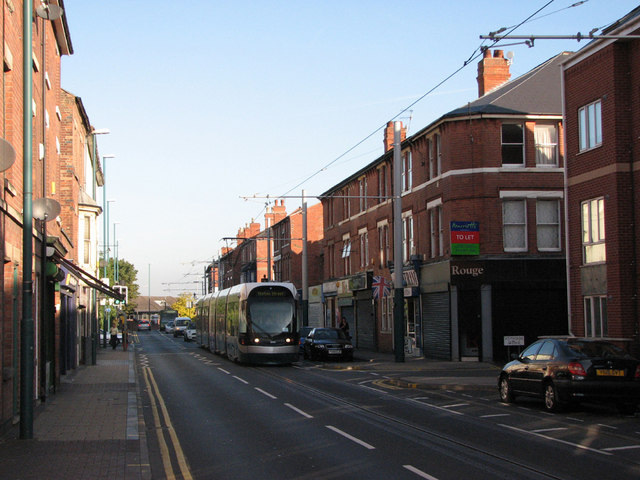So, the town of Palouse has a rail line running down the middle of Whitman Street (map, poor-quality photo). This isn't urban light rail, it's a section of mainline track. The TIGER import left Whitman zig-zagging across the track; I'm re-aligning it so Whitman is just barely north of the track. Is there a better way of doing things? asked 30 May '16, 06:51 Carnildo |
2 Answers:
Heavy railway lines running along ordinary roads are unusual, but certainly exist. In Switzerland the most prominent I can recall is the section of the Rhätische Bahn running though Le Prese in the Val Poschiavo, Graubunden. The Arosa branch of the same railway has street running in the middle of Chur.
It is more usual for light rail and tram systems to have combined street running with vehicular traffic. This example is Radford Road in Nottingham:
These examples have been mapped slightly differently(Le Prese, Chur, Nottingham), but there is enough commonality to suggest a suitable approach.
The two approaches respectively stress: co-existence of rail & highway and precise geographical relationship of the centrelines. The former results in a minor (<3 m imprecision of position of the railway line), the latter makes it very hard to distinguish between a railway line running on the street and one running beside the street but in the highway corridor. Effectively one chooses the approach closest to local mapping objectives. For railway lines not sharing nodes with the highway it might be possible to add a tag such as street_running=yes to indicate that it shares the carriageway. However I cannot immediately think of a similarly appropriate tag for the highway: my expectation would be that indicating the presence of trains on the road might be a hazard which drivers would like to learn about in advance. answered 30 May '16, 16:23 SK53 ♦ |
Jack London Square is another spot where heavy rail tracks are in the middle of the street. There is a note about that in wikipedia. It is currently mapped as four separate ways: One each for the double track railway and two separate automobile traffic ways despite it being all one level section of pavement with tracks embedded. That make sense to me as a functional description as opposed to a visual description. While they do sometimes block off or control traffic for special trains generally it is just a street that trains run on. With that as an example, I'd probably spit Whitman street into two one-way segments, one on each side of the rail line. answered 30 May '16, 17:49 n76 |



Is this it? https://www.openstreetmap.org/#map=18/46.91042/-117.07677
Can road vehicles drive across the track all along the shared section?? like many tram ways, or is the road one side or both sides? Is the track in effect on the central reservation? in which case draw two separate ways either side ( one way or two way ) of the track with links where crossings are possible ( level crossings ). Bing aerial looks ok but it isn't enough without an "on the ground" survey.
Looking at sources we are not allowed to use ( for OSM edits) suggests the track is flush with the road and is shared by both means of transport. The line is very twisty so is probably a very slow siding connecting local industry to a main line. I don't remember seeing a line like this. Health and Safety ?? Parked cars may be Squashed, and don't stop, breakdown, or get caught in a jam on the track!!! But it does seem to be correctly mapped.
Hi Carnildo, the town could benefit from a local survey; a lot of things as level_crossings, highway_crossings, switches and the old station area seem to be unnoticed. The Washington & Idaho railway still uses the north western branch and left the north eastern branch about 10 years ago and there’s just a railway bed left, used by pedestrians.
Unfortunately, I'm not exactly local -- Palouse is about an hour away by the fastest route. I happened to be passing through on my way from one park to another, and had a GPS, voice recorder, and automatic camera running.